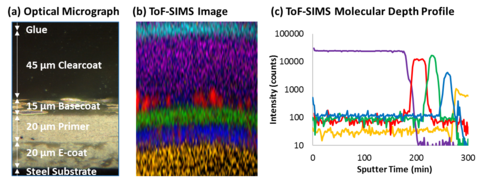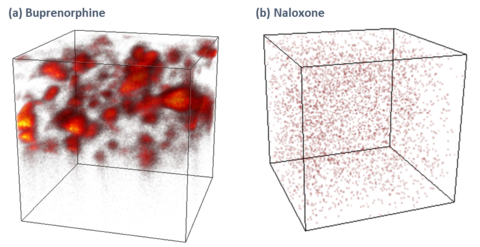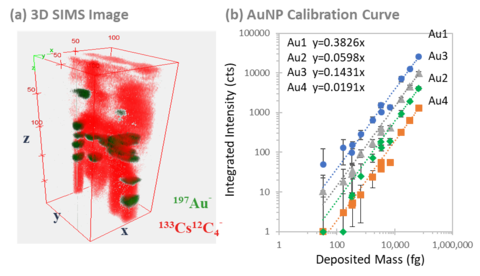Summary
The use of cluster sources such as C60 and argon gas cluster ion beams (Ar GCIB) allow for the analysis of the subsurface volume. It can also minimize the chemical damage generated by the bombardment of energetic ions into the analysis area, extending the achievable depth of analysis as well as allowing quantification by minimizing changes in sputter rates.
Description
In SIMS, a typical analysis requires <1% of the surface to be sampled, which minimizes chemical damage in the form of molecular fragmentation due to energetic ion bombardment. Cluster sources such as C60 and Ar GCIB allow for efficient removal of the damage volume, and by operating the analysis and cluster sources in tandem, can extend the achievable depth of analysis from a few nanometers to hundreds of micrometers. In Figure A, a depth profile shows for the first time the chemical composition of each layer as a function of depth in a 100 µm automotive paint film.

Chemical damage in the form of bond breaking and radical formation can produce graphitic deposits, which can affect the removal rate of these chemistries. Being able to remove the majority of the damaged volume equates to being able to sample a fresh surface with a constant rate of sampling, which is beneficial for quantification. ToF-SIMS with the argon gas cluster source has been used for the quantification of active pharmaceutical ingredients in drug delivery films (Figure B) and gold nanoparticles in biological tissue (Figure C), both of which showed that the instrument has the dynamic range to accurately quantify materials in the femtogram to nanogram range, concentrations that are relevant for biological applications.



